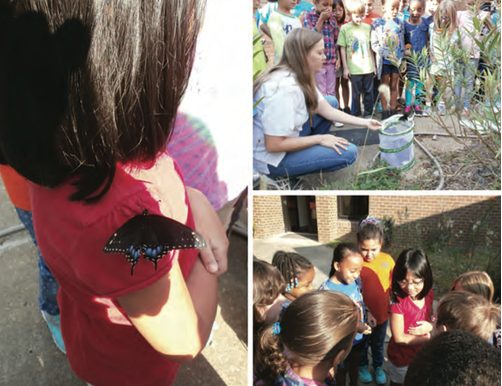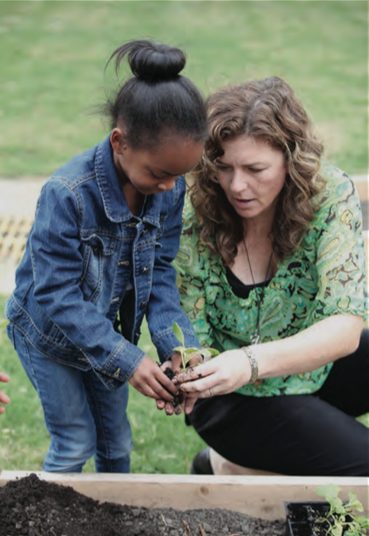This article originally appeared in the March 2015 School Business Affairs magazine and is reprinted with permission of the Association of School Business Officials International (ASBO). The text herein does not necessarily represent the views or policies of ASBO International, and use of this imprint does not imply any endorsement or recognition by ASBO International and its officers or affiliates.
In the film The Matrix, the hero is given the following choice: “You take the blue pill the story ends, you wake up in your bed and believe whatever you want to believe. You take the red pill, you stay in Wonderland and I show you how deep the rabbit hole goes.”
For more than a decade, Virginia Beach City Public Schools (VBCPS) has been methodically navigating the rabbit hole as it moves toward an educational and operational model that embraces the triple bottom line of social, economic, and environmental effects when measuring profit and loss.
How does a school division with approximately 70,000 students and 15,000 employees, located in a city that researchers have identified as the third-most conservative city in the country (Tausanovitch and C. Warshaw 2014), become one of the “greenest” school divisions in the country? It’s simple: we realize it’s the smart way to run a business.
Defining Sustainability
In 1987, the World Commission on Environment and Development defined sustainability as “meeting the needs of the present without compromising the ability of future generations to meet their own needs.” The definition of sustainability expanded in 1994 when British consultant John Elkington coined the phrase “triple bottom line,” which includes three divisions: people, planet, and profit or the “three pillars of sustainability.”
The sustainability model referred to most often in VBCPS is the one developed by Mohan Munasinghe, economist and vice chair of the Intergovernmental Panel on Climate Change. Munasinghe identifies specific concepts relative to each leg of the triple bottom line, concepts such as resiliency, empowerment, and inclusion, which are important to all school districts. In that context, sustainability becomes another vehicle for engaging students in issues that are larger than themselves.
Taking a Holistic Approach
What began as a desire to build new schools that addressed indoor air quality, natural daylight, and the building as a teaching tool has evolved into a more holistic, division-wide approach. The following three goals define that approach in VBCPS:
• Develop a sustainable building infrastructure.
• Integrate sustainable practices throughout the school division.
• Educate the public about sustainability. VBCPS addresses the building environ- ment and infrastructure by ensuring that all its buildings, whether new or modernized, meet the Leadership in Energy and Environ- mental Design (LEED) criteria defined by the U.S. Green Building Council. VBCPS has completed 8 LEED projects to date; the ninth LEED project is under construction, and the tenth is in the design phase. The completed projects include one basic LEED certification, two LEED Silver, three LEED Gold, and two LEED Platinum projects.
The division constructs new buildings using LEED criteria; the existing infrastructure is addressed through Energy Star and performance contract work.
A representative from each administrative department was selected to serve on the Sustainable Schools Committee (SSC) to help integrate sustainable practices across the school division. The SSC is responsible for implementing and monitoring sustainability practices within each department and across the division. Examples of sustainable practices include a no-idle policy (Transportation Department), sustainable cleaning practices (Custodial Services), local food purchases (Food Services), and a division-wide emissions reduction plan that includes all departments.
The money that the division saves and the emissions that are reduced as a result of the first two goals are important, but the educational component is what determines whether we are truly preparing students for the 21st century. Each school has a sustainable school liaison who acts as a conduit between the school and the SSC to help implement such programs as outdoor teaching gardens, environmental clubs, and partner- ships with third-party groups that specialize in watershed quality issues, such as the Chesapeake Bay Foundation and Lynnhaven River Now.

Metrics Are Important
The construction, operation, and maintenance of a building portfolio are challenges that every school divi- sion faces. VBCPS has experienced the same budgetary struggles as many of its peer districts when it comes to its operations versus the capital program. The current strategy of robbing Peter to pay Paul is reflected in the capital improvement revenue that decreased from $61 million in 2006–07 to $34.6 million in 2014–15. In a state where the lottery was introduced as a vehicle to fund public education and where lottery proceeds for nearly a decade funded $12 million to $14 million annually in construction needs zero lottery dollars are currently allocated for capital construction.
Since 1998, VBCPS has spent $620 million to modernize or replace 31 of the 92 buildings that are currently in its inventory. If two buildings are modernized cheap ambien online overnight delivery each year, it will take 50 years to modernize the entire inventory. Unfortunately, budget constraints have slowed the modernization schedule to one building every two years. At this stage, most school divisions are simply reacting to emergencies like leaking roofs and broken heating, ventilation, and air-conditioning (HVAC) systems. In Virginia Beach, 23 schools have HVAC systems that are at the end of their life cycles. In current dollars, that amounts to $85 million for HVAC work alone.
Fortunately, for the past 11 years, BCPS has been moving in a direction that eased the transition to tough economic times. Last year, the school division spent approxi- mately $17 million on utilities. By constructing new buildings according to LEED criteria and focusing on Energy Star and performance contract work for HVAC and lighting in existing buildings, VBCPS has reduced energy costs. Since 2006, the school division has increased in square footage by 9% to 10.6 million square feet. At the same time, energy use per square foot has decreased by 21%.
It is a common misconception that LEED buildings cost more to construct than traditional schools. That has not been the case for VBCPS. The cost of each LEED building constructed in Virginia Beach is compared with School Planning & Management’s Annual School Construction Report. That report lists average square foot costs for elementary, middle, and high schools in their respective regions. When compared with construction costs in Region 3 (which includes Delaware, the District of Columbia, Maryland, Virginia, and West Virginia), all eight completed LEED projects in VBCPS have been built for less than the regional average. (It is worth noting that most of the comparative schools throughout the region are non-LEED buildings.)
LEED buildings cost less to oper- ate as well. VBCPS’s LEED build- ings, by conservative estimates, produce $670,000 in cost avoidance each year. In addition, since 2008, $14 million has been spent on performance contract work. That work resulted in $1.8 million in cost avoidance last year and is expected to grow each year.
The first goal addresses the built environment, but the way departments address sustainability can have a significant effect on the bottom line as well. For instance, implementing a no-idle policy for a fleet of more than 700 school buses adds up quickly. VBCPS estimates at least $50,000 per year in savings from that program. When you combine transportation initiatives with custodial services programs like team cleaning practices (where night custodians turn on the lights only in areas where they are working), automated menus in food services, revised delivery schedules with distribution services, double-sided copying policies, removal of personal appliances from buildings, and holiday setbacks for HVAC controls, it all adds up to reduce operation costs by millions of dollars each year.
There are also metrics that do not translate as obviously to financial savings. For example, Hermitage Elementary School was the first LEED building constructed in Virginia Beach. It was also the first LEED elementary school in Virginia. When the local news station interviewed the school nurse several years after the school opened, she shared that students and staff experienced a number of respiratory-related emergencies in the old building each year. They have had none since moving into the new building. A local school board member who had an asthmatic daughter at the school noted that her daughter had had no asthma related issues in the new building.
A number of national studies address the positive effect of the built environment on test scores, including one published by the McGraw-Hill Research Foundation (Baker and Bernstein 2012). The data will need to be studied over time before a conclusive determination can be made in VBCPS.

Thinking Big, Starting Small
Politics aside, it makes good business sense for school divisions to take a holistic approach to sustainability initiatives. If a school division can significantly reduce its operation and maintenance budget, improve student and staff health, and improve test scores while preparing students to face the complexities of the 21st century, we should be promoting that news at every opportunity. All it takes is a willingness to think big, start small, and act now. Who knows, you may find that the rabbit hole is not such a scary place after all.
To learn more, visit VBCPS’s Sustainable Schools web- page (www.vbschools.com/SustainableSchools).
References
Baker, L., and H. Bernstein. 2012. The impact of school build- ings on student health and performance. McGraw-Hill Research Foundation and Center for Green Schools, February 27.
Tausanovitch, C., and C. Warshaw. 2014. Representation in municipal government. American Political Science Review 108, no. 3 (August): 605–41. http://cwarshaw.scripts.mit.edu/papers/ TW_Cities_APSR_Published.pdf.
World Commission on Environment and Development. 1987. Report to the UN General Assembly, 96th Plenary Meeting, December 11. www.un.org/documents/ga/res/42/ares42-187.htm.
Tim Cole is the sustainability officer for Virginia Beach City Public Schools in Virginia Beach, Virginia.
